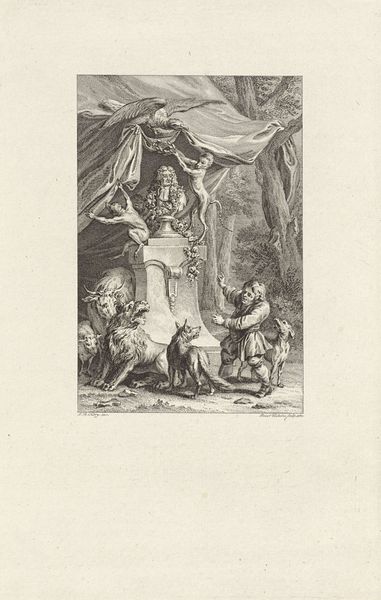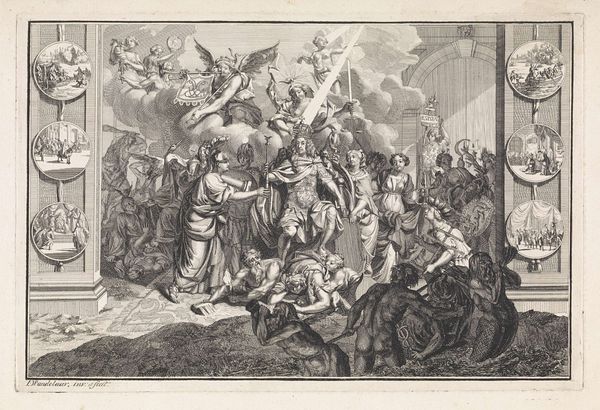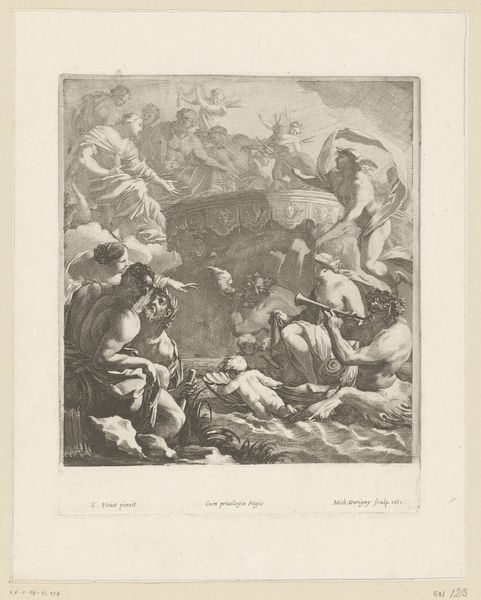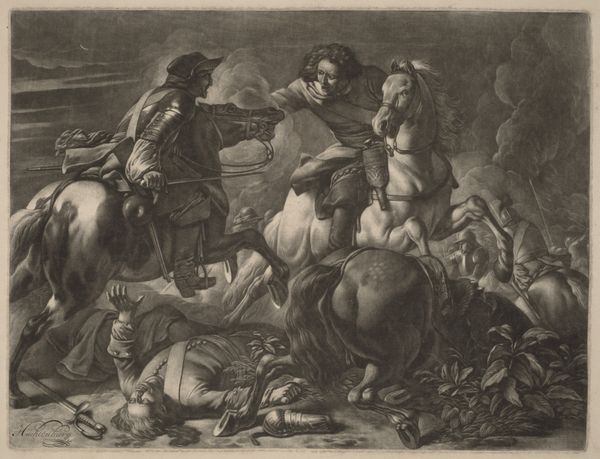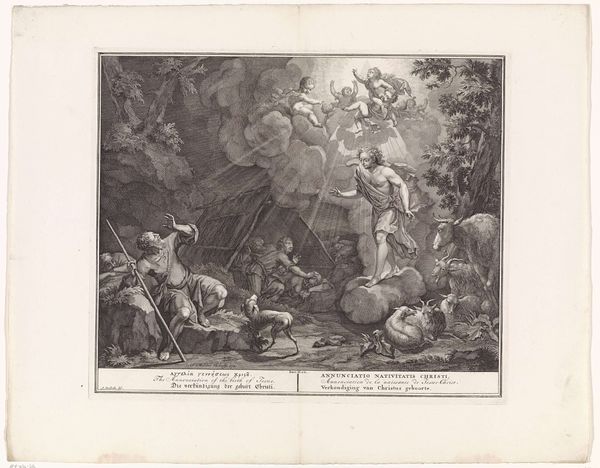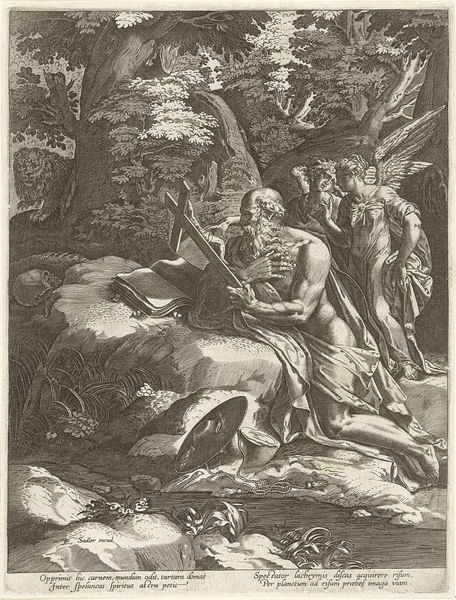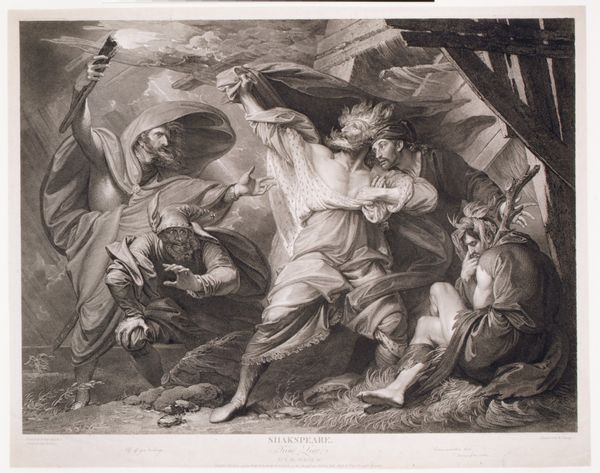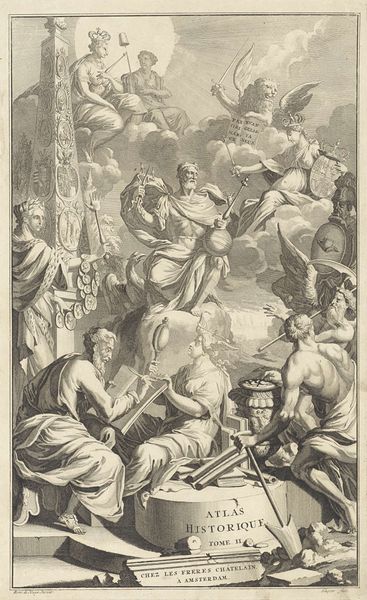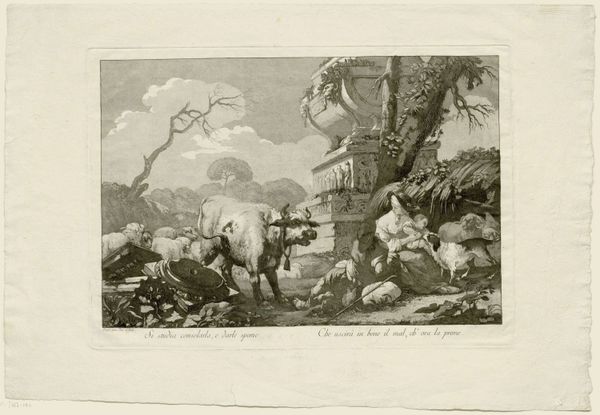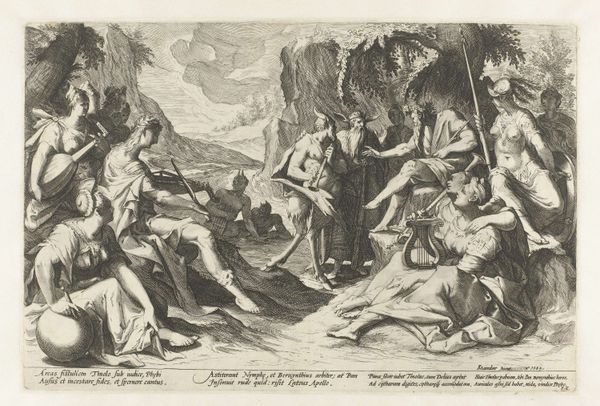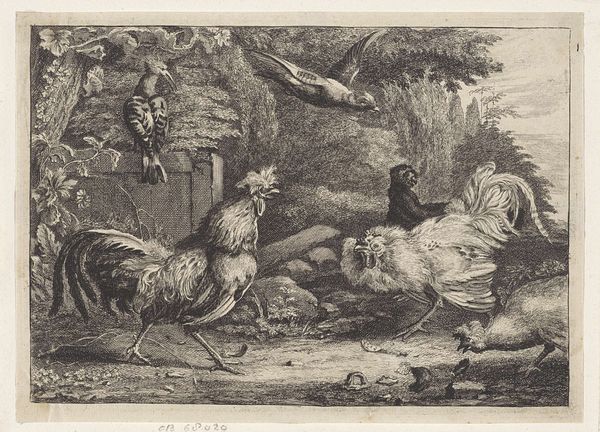
print, engraving
#
portrait
#
allegory
#
baroque
# print
#
figuration
#
classicism
#
line
#
history-painting
#
engraving
Dimensions: height 157 mm, width 242 mm
Copyright: Rijks Museum: Open Domain
Jacob Folkema etched "The Triumph of Prince Eugene of Savoy" in 1719, and it teems with classical symbolism meant to elevate Prince Eugene’s status. Consider the Roman Eagle overhead, a symbol of imperial power and victory, echoed in the figure of Fame, blowing her trumpet to herald the Prince’s glory. Even the inclusion of Minerva, the goddess of wisdom and warfare, reinforces the idea of a leader endowed with divine favor. This motif of the triumphant leader, celebrated through allegorical figures, is not unique. We see it echoed through the ages, from Roman imperial art to Renaissance depictions of emperors and kings. Each era adapts these symbols, loading them with new cultural weight, yet the underlying message of power and divine right persists. The powerful imagery engages our collective memory, triggering subconscious associations with authority, victory, and the cyclical nature of power itself. Such visual language speaks to our primal understanding of status and leadership, and the human desire to immortalize great figures.
Comments
No comments
Be the first to comment and join the conversation on the ultimate creative platform.

